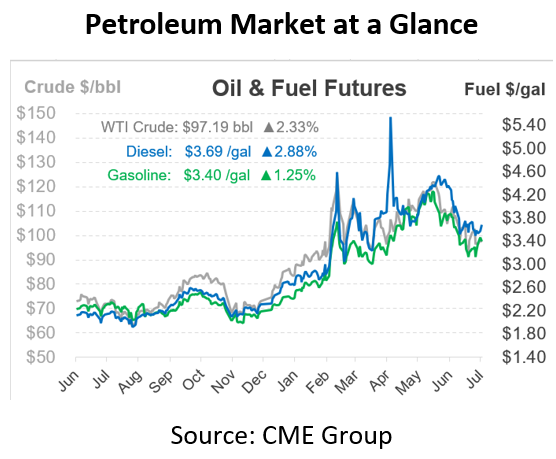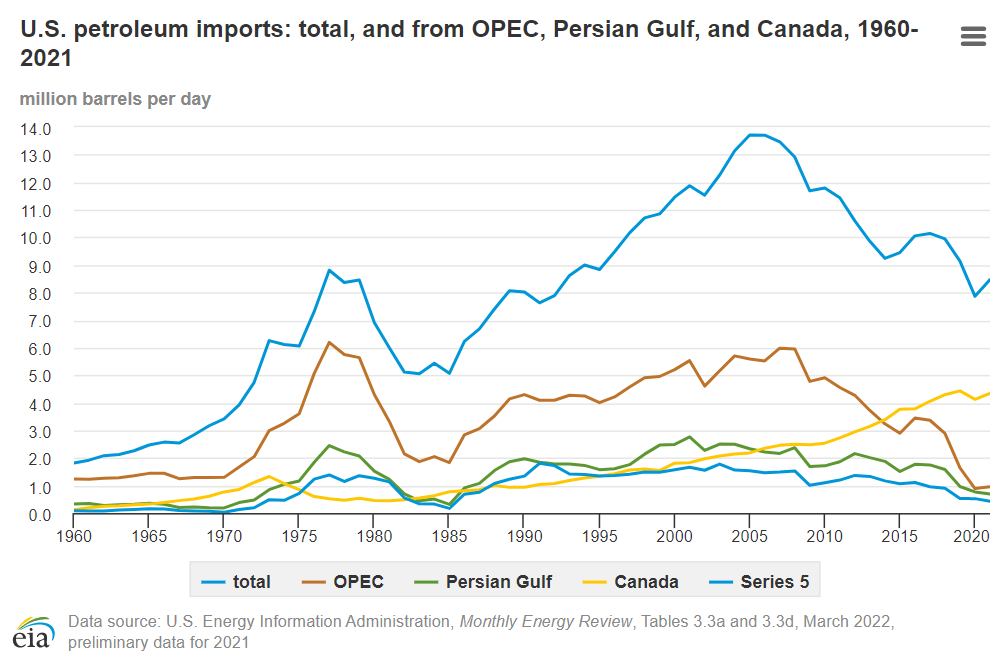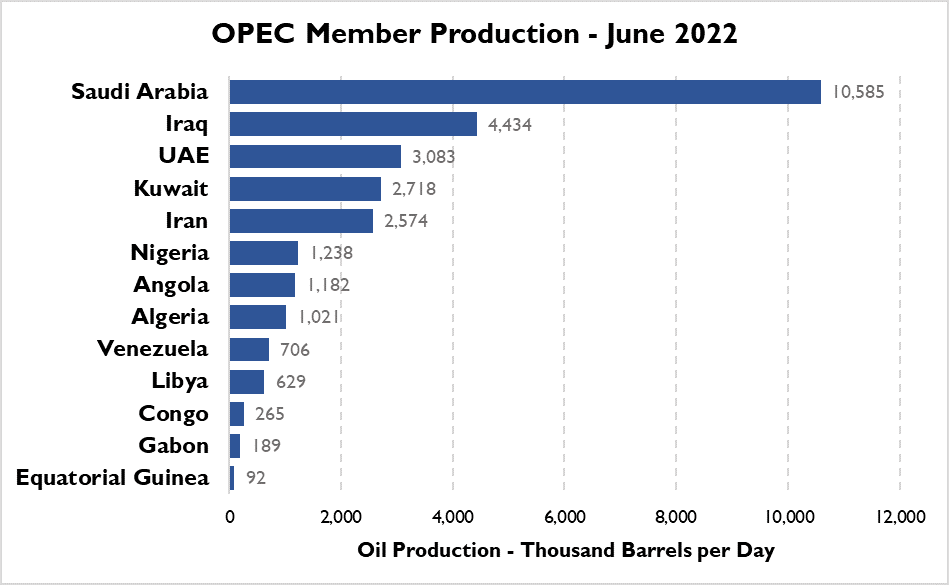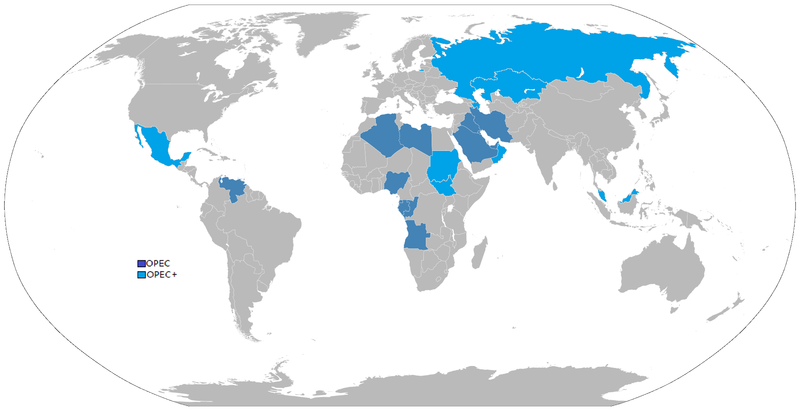
What Is It Wednesday – OPEC
Welcome to our continuing FUELSNews series: What Is It Wednesday. Each week, we’ll pick a fuel industry topic to explain, so you can learn more about the market and what drives it.
Why do the decisions of one organization create ripples throughout oil markets, causing prices to double or halve over time? Well, when that organization consists of 13 member countries who control 40% of world oil production – it begins to make a bit more sense. It’s hard to go a week without hearing about OPEC, their latest decisions, or speculations on their future activity. What is OPEC, and why are they so influential over global oil markets?
What Is OPEC?
The Organization of Petroleum Exporting Countries, or OPEC, is an intergovernmental organization that together controls roughly 30-40% of the world’s oil production and nearly 80% of global proven oil reserves. Founded in 1960 with just five members, the group has expanded over time to include a total of 13 countries.
OPEC is a cartel – a group of major industry players who align themselves to reduce competition. Together, OPEC’s members decide when to increase production or reduce output to control global oil prices. Since each member is a sovereign country, however, western anti-monopoly laws do not apply. In-fighting and cheating by member countries has also hampered the organization’s ability to truly control global oil prices.
According to the OPEC website, the organization’s mission is: to coordinate and unify the petroleum policies of its Member Countries and ensure the stabilization of oil markets in order to secure an efficient, economic and regular supply of petroleum to consumers, a steady income to producers and a fair return on capital for those investing in the petroleum industry.
Why OPEC Matters
Given its size, OPEC production is crucially important for global oil markets. Although voluntary cuts and rising US output have diminished their share of world output to just 30% in 2022, the group has produced as much as 45% of the world’s oil in the past few decades. Among the world’s 10 largest oil producing countries, five are OPEC members.
For the US, OPEC used to matter much more than they do today. In 2021, OPEC accounted for just 11% of US oil imports, according to the EIA. While still significant, that’s down from OPEC making up 75% of imports back in the 1970s. A push for US energy security in the 90s and early 2000s sent OPEC’s contribution spiraling, while Canadian and Mexican imports surged under NAFTA.
OPEC’s place in global oil markets is controversial. On one hand, western countries accustomed to private enterprise balk at the state-run, monopolistic practices of OPEC countries. When prices are high, OPEC often comes under the spotlight as a contributor to pain at the pump. On the other hand, their action to stabilize markets in 2016 and 2020 helped keep the entire industry afloat, preventing massive bankruptcies among oil companies that would have been ruinous once the pandemic ended. Whether you despise OPEC or accept their monopoly, it’s impossible to understand global oil fundamentals without considering OPEC policymaking.
Let’s Meet OPEC’s Members
OPEC has 13 member countries currently. They are:
Founding Members: Iran, Iraq, Kuwait, Saudi Arabia, and Venezuela
New Members: Libya (1962), United Arab Emirates (1967), Algeria (1969), Nigeria (1971), Gabon (1975), Angola (2007), Equatorial Guinea (2017), Republic of the Congo (2018)
Prior Members: Ecuador (1973-1992, 2007-2020), Indonesia (1962-2008, 2016), Qatar (1961-2019)
As the largest member, Saudi Arabia wields an enormous amount of influence over OPEC policy-making, which has at times alienated other members. Saudi Arabia is seen as the enforcer for the organization, since there’s no real mechanism to enforce production limits. Instead, Saudi Arabia maintains authority by threatening to flood the market and cause oil prices to crash, which would be detrimental to many other countries. With a large sovereign wealth fund and extremely low production costs, Saudi Arabia is able to weather a market crash far better than other members.
At the time of writing, two of OPEC’s members, Iran and Venezuela, are the subject of US and/or international sanctions which prevent their ability to trade with most of the developed world. These have caused their production to fall well below historical levels, sapping their influence in group decision-making.
Source: OPEC
OPEC vs. OPEC+
In 2016, as oil prices were crashing to $40/bbl, OPEC members formed a broader alliance with a group of 10 non-OPEC countries to gain further leverage in managing oil prices:
- Azerbaijan
- Bahrain
- Brunei
- Kazakhstan
- Malaysia
- Mexico
- Oman
- Russia
- South Sudan
- Sudan
Source: Wikimedia
Together, these countries agreed to production cuts of 1.7 million barrels per day. Of that, 1.2 MMbpd would come from OPEC members, and 558 kbpd would come from non-OPEC members. Unlike prior arrangements, countries showed strict adherence to the arrangement, which sent oil prices rising to the $50-$60 per barrel range.
Fast forward to 2020, and the alliance was in peril. Fighting between Saudi Arabia and Russia had all but unraveled any cooperation, but the global pandemic forced a reconciliation. In April 2020, the OPEC+ group collectively agreed to a historic agreement to address pandemic-induced demand destruction, cutting 9.7 million barrels per day. OPEC delivered two-thirds of the cuts, while the non-OPEC members, led by Russia, contributed the remaining third.
The 2020 deal, which has been extended and modified several times, is set to expire at the end of September 2022. How the group continues to interact beyond that timeframe is unclear. In the face of historically high prices in 2022, many expect the OPEC+ alliance to disband for now, allowing countries to produce at will to help stabilize global oil prices.Whatever happens, expect OPEC to continue exerting its influence over global energy markets, especially as the world grapples with a looming shortage of oil production.
This article is part of Daily Market News & Insights
Tagged: crude, crude oil, Daily Market News & Insights, diesel, gas, gas supply, inventory, Oil Industry, opec
MARKET CONDITION REPORT - DISCLAIMER
The information contained herein is derived from sources believed to be reliable; however, this information is not guaranteed as to its accuracy or completeness. Furthermore, no responsibility is assumed for use of this material and no express or implied warranties or guarantees are made. This material and any view or comment expressed herein are provided for informational purposes only and should not be construed in any way as an inducement or recommendation to buy or sell products, commodity futures or options contracts.









